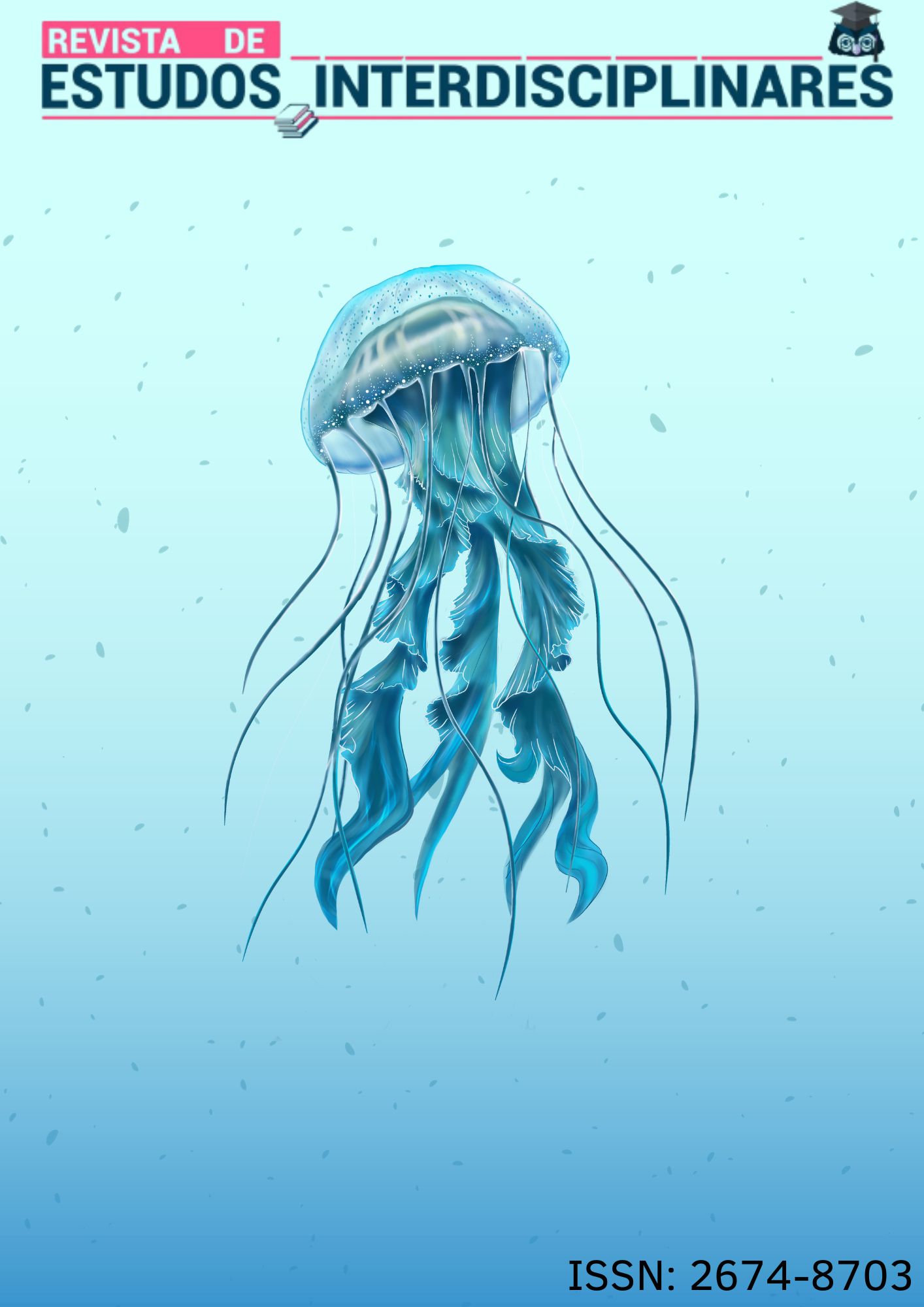EL PROCESO METABÓLICO Y LA FUNCIÓN INMUNOLÓGICA DE LA GLUTAMINA EN JOVENES ATLETAS
Visualizações: 289DOI:
https://doi.org/10.56579/rei.v5i6.456Palabras clave:
Glutamina, Función inmune, Deterioro InmunológicoResumen
Este artículo tiene como objetivo analizar la relación entre la suplementación de glutamina y el compromiso del sistema inmunológico en jóvenes atletas, buscando comprender hasta qué punto la deficiencia de glutamina afecta el sistema inmunológico y aumenta la susceptibilidad a infecciones en los jóvenes. Se trata de una revisión bibliográfica basada en una recopilación cualitativa de datos, cuestionando el proceso metabólico de la glutamina y su función potenciadora en el sistema inmunológico de los jóvenes atletas. Se observa la necesidad de suplementar adecuadamente este aminoácido durante circunstancias catabólicas/hipercatabólicas, debido al esfuerzo físico realizado por los jóvenes atletas, ya que su demanda aumenta drásticamente, lo que conduce a una falta de glutamina y un grave compromiso de la función inmunológica de estos atletas. La investigación reveló que las células inmunológicas dependen en gran medida de la disponibilidad de este aminoácido para sobrevivir, proliferar y funcionar en la protección de nuestro organismo contra patógenos.
Descargas
Citas
AMERICAN ACADEMY OF PEDIATRICS. Comitê de Medicina Esportiva e Fitness e Comitê de Saúde Escolar. (2009). Organized sports for children and preadolescents. Pediatrics, 107, 1.459-1.462.
AUCOUTURIER J, et al. Metabolismo de gorduras e carboidratos durante o exercício submáximo em crianças. Sports Medicine. v.38, n.3, 213–238, 2013. DOI: https://doi.org/10.2165/00007256-200838030-00003
BASS S, INGE K. (2009). Nutrition for special populations: children and young athletes. In Clinical Sports Nutrition (edited by L. Burke and V. Deakin) 589-632. Sydney: McGraw-Hill
BASSIT RA, et. al. (2012). Branched-chain amino acid supplementation and immune response in long-distance athletes. Nutrition Magazine, 18, 376–379. DOI: https://doi.org/10.1016/S0899-9007(02)00753-0
CALDER PC, YAQOOB P. Glutamina e sistema imunológico. Amino Acids 2012, 17, 227–241. [CrossRef] [PubMed] DOI: https://doi.org/10.1007/BF01366922
CRUZAT VF, et. al. Oral supplements with free and dipeptide forms of l-glutamine: effects on the muscle glutamine-glutathione axis and on heat shock proteins. J. Nutr. Biochem. 2014, v.2, n.25, 345–352. DOI: https://doi.org/10.1016/j.jnutbio.2013.11.009
CURI R, et al. Molecular mechanisms of glutamine action. J. Cell. Physiol. 2016, 204, 392–401. [CrossRef] [PubMed] DOI: https://doi.org/10.1002/jcp.20339
CURI R, et al. Regulatory principles in metabolismo - then and now. Biochem. J. 2012, 473,1.845–1.857. [CrossRef] [PubMed]
FROILAND K, et al. Use of nutritional supplements among university athletes and their sources of information. International Journal of Sport Nutrition and Exercise Metabolism. v.14, n.1, 104–120, 2014. DOI: https://doi.org/10.1123/ijsnem.14.1.104
GRIFITHS RD, et al. (2010) Total parenteral nutrition of glutamine and responses to infections acquired in intensive care. Clinical Nutrition 19, 42 (abstract 172).
GROHMANN U, et al. Pathways of detection and degradation of amino acids in immune regulation. Cytokine Growth Factor Rev. 2017, v.1, n. 35, 37–45. DOI: https://doi.org/10.1016/j.cytogfr.2017.05.004
HARRELL JS, et al. Energy costs of physical activities in children and adolescents. Medicine and Science in Sports and Exercise, vol.37, nº 2, 329–336, 2005. DOI: https://doi.org/10.1249/01.MSS.0000153115.33762.3F
JAYANTHI NA et al. Risks of training and specialization in elite junior tennis players. J Med Sci Tennis. 2011; 16(1):14-20.
KREBS HA. Amino acid metabolism: the synthesis of glutamine from glutamic acid and ammonia and the enzymatic hydrolysis of glutamine in animal tissues. Biochem. J. 1935, 29, 1.951–1.969. [CrossRef] [PubMed]
LAGRANHA CJ, et al. Glutamine supplementation prevents exercise-induced neutrophil apoptosis and reduces the phosphorylation of p38 mapk and jnk and the expression of p53 and caspase 3. Cell Biochem. Funct. 2007, 25, 563–569. [CrossRef] [PubMed] DOI: https://doi.org/10.1002/cbf.1421
MALINA RM, et al. Human Kinetics of Growth, Maturation and Physical Activity. Champaign, Ill, USA, 2ndedition, 2014.
MURPHY C, NEWSHOLME P. (2008) Importance of glutamine metabolism in murine macrophages and human monocytes in the L-arginine biosynthesis and rates of nitrite or urea production. Clin Sci 89, 397–407. DOI: https://doi.org/10.1042/cs0950397
NEWSHOLME P. (2011) Why is L-glutamine metabolism important for immune cells in health, post-injury, surgery or infection? J Nutr 131, 2515S–2522S. DOI: https://doi.org/10.1093/jn/131.9.2515S
NEWSHOLME P, et al. Metabolism of glucose, glutamine, long-chain fatty-acids and ketone-bodies by murine macrophages. Biochem. J. 2012, 239, 121–125. [CrossRef] [PubMed] DOI: https://doi.org/10.1042/bj2390121
OUDEMANS-VAN STRAATEN HM, et al. Depleção de glutamina no plasma e resultado do paciente em admissões agudas na UTI. Intensiv. Care Med. 2011, 27, 84–90. [CrossRef] DOI: https://doi.org/10.1007/s001340000703
RODRIGUEZ NR, et al. Posição e suporte da Escola Americana de Esportes e Medicina. Nutrição e desempenho atlético. Medicine & Science in Sports & Exercise, v. 41 n3, 709–731, 2009. DOI: https://doi.org/10.1249/MSS.0b013e31890eb86
SEEFELDT V, et al. Overview of Youth Sports Programs in the United States. Washington, DC: Carnegie Council on Adolescent Development; 2009, 335–339.
WIERSMA LD. Riscos e benefícios da especialização em esportes para jovens: perspectivas e recomendações. Pediatr Exerc Sci. 2010; 12:13-22. DOI: https://doi.org/10.1123/pes.12.1.13
WILMORE DW, SHABERT JK. Papel da glutamina nas respostas imunológicas. Nutrition, 2011, 14, 618–626. [CrossRef] DOI: https://doi.org/10.1016/S0899-9007(98)00009-4
Descargas
Publicado
Cómo citar
Número
Sección
Licencia
Derechos de autor 2023 Revista de Estudos Interdisciplinares

Esta obra está bajo una licencia internacional Creative Commons Atribución 4.0.
La Revista de Estudios Interdisciplinares adopta la Licencia Creative Commons Atribución 4.0 Internacional (CC BY 4.0), que permite compartir y adaptar el trabajo, incluso con fines comerciales, siempre que se otorgue la atribución adecuada y se reconozca la publicación original en esta revista.


